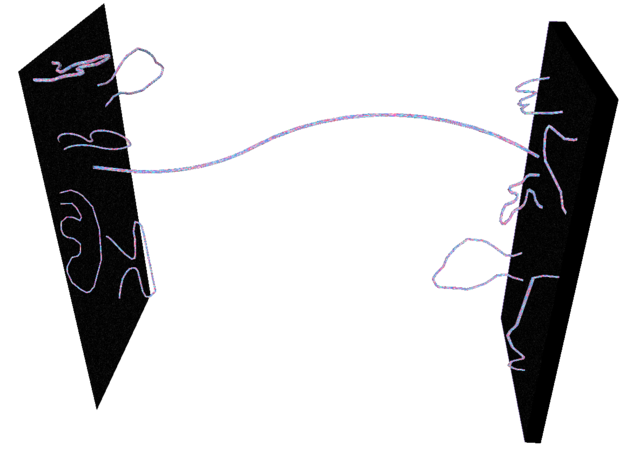The research activity of the STEFI (String Theory and Fundamental Interactions) group at the INFN Tor Vergata Section works on string theory, one of the most advanced and promising areas of modern theoretical physics. String theory proposes that elementary particles are not point-like but rather one-dimensional objects, thus providing a consistent framework in which gravity can also be described in quantum terms. This theoretical framework has opened new perspectives in the study of gravity, black holes, and cosmological singularities.
Over time, the discovery of non-perturbative objects such as branes and the emergence of surprising duality relations between different physical theories have led to the formulation of the holographic principle, made concrete in the AdS/CFT correspondence. Unexpected generalisations of the holographic correspondence have been proposed, capturing the dynamics of strongly coupled systems in various contexts, including exotic condensed matter systems.

The Tor Vergata group is active in many areas: from the classification of N=2 superconformal theories in four dimensions to the application of Seiberg-Witten theory, as well as techniques such as localization, recursion relations, and the AGT correspondence, to the study of non-perturbative phenomena in quantum field theories. The group works not only on applying perturbation theory to black holes and fuzzballs but also on studying the perturbative structure of black holes and investigating the validity of effective field theories near event horizons.
Other topics include the holographic approach to dual theories with higher-spin gravitons, the study of phase transitions and the production of gravitational waves in models with axions or Majorons, and the analysis of the index of supersymmetric black holes. Further research is dedicated to gravity with dynamical torsion, understanding the role of de Sitter space in string theory, and α′ corrections in effective actions, which are essential for constructing realistic string theory vacua.
For more details:
Massimo Bianchi
Giuseppe Dibitetto
Francesco Fucito
José Francisco Morales
Gianfranco Pradisi
Raffaele Savelli








